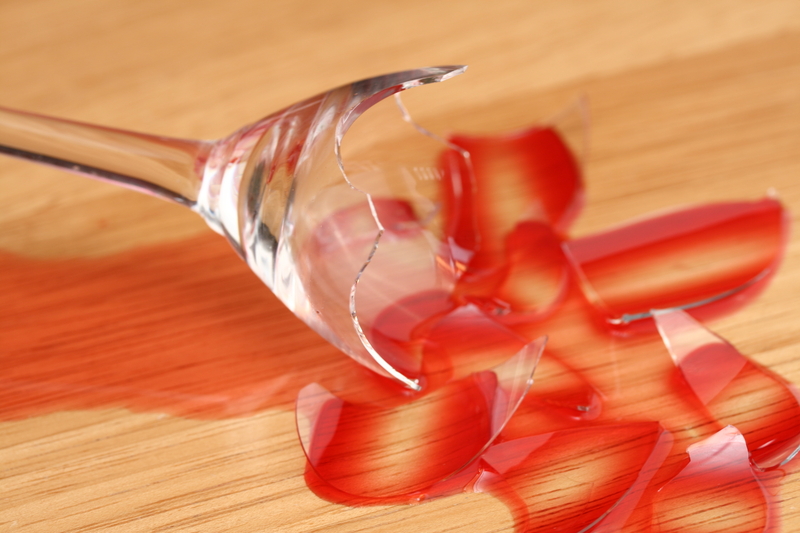Elevate Your Environment: Damp Smell Elimination
Posted on 05/09/2025
Elevate Your Environment: Damp Smell Elimination
If you've ever walked into a room only to be greeted by a musty, damp odor, you know just how unpleasant it can be. These lingering smells not only affect your comfort but can also signal underlying moisture problems. In this comprehensive guide, we delve deep into damp smell elimination -- offering actionable tips, eco-friendly solutions, and preventive measures to help you elevate your environment and create a fresher, healthier space.

Understanding the Root Causes of Damp Smells
Before tackling the task of removing damp odors, it's crucial to identify why these scents persist. Damp smells are typically caused by excess moisture, which creates the perfect breeding ground for mold, mildew, and bacteria. Pinpointing the source is imperative for damp odor removal success.
Common Sources of Damp Odors
- Leaky pipelines or plumbing fixtures
- Poor ventilation in humid spaces (bathrooms, basements)
- Condensation on walls, ceilings, windows
- Flooding or water intrusion
- Damp fabrics (carpets, curtains, and upholstery)
- Mold and mildew growth behind walls or under flooring
Understanding these sources helps target the right solutions for effective damp smell elimination.
Why It's Essential to Eliminate Damp & Musty Smells
- Health Benefits: Prolonged exposure to mold and mildew can trigger allergies, asthma, and respiratory problems.
- Improved Comfort: Fresh indoor air promotes relaxation, productivity, and overall well-being.
- Property Value: Persistent odors can lower your home's market appeal and value.
- Preservation: Preventing moisture damage preserves furniture, walls, and structural integrity.
By addressing the root causes and removing the sources, you're not just masking, but truly eliminating the damp odor--and creating a safer, more inviting environment.
Practical Steps for Damp Smell Elimination
1. Locate and Fix Moisture Sources
- Inspect Leaks: Check all plumbing, ceilings, and walls for leaks or water stains.
- Seal Cracks: Repair foundation, window, and roof gaps.
- Monitor Humidity: Aim for indoor humidity between 30-50%.
Eliminating excess moisture often results in rapid musty odor elimination and discourages future smells.
2. Enhance Ventilation & Air Circulation
- Open Windows & Doors: Natural airflow helps evaporate dampness.
- Install Exhaust Fans: Especially crucial in kitchens, bathrooms, and laundry rooms.
- Use Dehumidifiers: Run these in humid areas to draw moisture from the air.
- Ceiling or Portable Fans: Aid in circulating dry air throughout the space.
Proper ventilation is your first line of defense against lingering moisture and related odors.
3. Clean and Treat Surfaces Effectively
- Wash Fabrics: Launder drapes, carpets, bedding, and upholstery. Use a cup of white vinegar in the wash for added deodorizing power.
- Scrub Hard Surfaces: Clean walls, floors, and tiles with a solution of water and baking soda or vinegar.
- Address Mold Spots: Use a mixture of hydrogen peroxide or specialized mold remover for persistent mold areas.
4. Absorb & Neutralize Odors Naturally
- Baking Soda: Sprinkle on carpets, leave overnight, and vacuum in the morning.
- Activated Charcoal: Place pouches in problem areas to absorb both moisture and odors.
- Vinegar Bowls: Set bowls of white vinegar out to neutralize smells.
- Essential Oils: Diffuse to add a clean, pleasant aroma after eradicating the source.
These methods are eco-friendly and safe for pets and children.
5. Regular Maintenance and Routine Checks
- Inspect Basement and Crawl Spaces: These are notorious for trapping musty odors.
- Wipe Down Hidden Surfaces: Don't forget the backs of furniture and closets.
- Schedule HVAC Maintenance: Clean filters and ducts regularly to prevent fungal buildup.
Consistency ensures damp smell removal and prevents reoccurrence.
Advanced Strategies for Persistent Damp Smells
Professional Mold Remediation
If you've tried all the above and the musty smell remains, there may be hidden mold colonies. Mold remediation experts use specialized equipment to detect moisture behind walls, under floors, or in HVAC systems. If in doubt, bring in certified professionals for a thorough assessment and removal. This not only eliminates odors but also ensures a safe and healthy environment.
Waterproofing and Basement Solutions
- Install French Drains: Direct water away from the foundation.
- Apply Waterproof Sealants: Protect basement walls and floors.
- Sump Pumps: Automatically remove accumulated water before it causes dampness.
These improvements offer comprehensive environment elevation by preventing dampness and odors at their source.
Upgrading Insulation and Vapor Barriers
Old or insufficient insulation can allow condensation and moisture buildup. Install modern vapor barriers in crawl spaces or attics, and use mold-resistant insulation for added protection.
HEPA Air Filtration Systems
High-Efficiency Particulate Air (HEPA) filters can trap mold spores, dust, and microorganisms that contribute to damp odors. These are especially helpful in homes with sensitive occupants or ongoing moisture issues.
Eco-Friendly Tips for Damp Odor Removal
Green Cleaning Agents
- White Vinegar: A powerful, natural deodorizer that kills molds and neutralizes odors.
- Baking Soda: Absorbs moisture and odors, safe to use on most surfaces.
- Lemon Juice: Natural disinfectant and leaves a fresh scent.
- Tea Tree Oil: Mix with water to create a potent anti-mold spray.
Plant-Based Air Purifying Solutions
- English Ivy, Snake Plant, and Peace Lily: These houseplants help absorb harmful impurities and excess moisture in the air.
Reuse and Recycle
- Repurpose Old Towels: Use them to soak up standing water before proper laundering.
- DIY Dehumidifying Bags: Fill breathable fabric bags with rice or silica gel.
Go Solar
- Sun Dry: Whenever possible, air out bedding and fabrics under the sun to kill bacteria and neutralize musty smells.
These practices not only
Preventing Future Dampness and Odors
Design Improvements for Damp-Free Living
- Elevate Furniture: Keep couches and beds a few inches from damp-prone walls.
- Utilize Waterproof Storage: Store textiles and perishables in airtight, waterproof bins.
- Slope Landscaping: Grade your yard away from the house to minimize water seepage.
- Install Drip Pans: Under water heaters and AC units to capture leaks early.
Smart Technology Solutions
- Smart Thermostats: Schedule temperature and humidity control remotely.
- Moisture Alarms: Receive alerts at the first sign of water accumulation.
- Wireless Dehumidifiers: Monitor and manage moisture levels in real-time.
Seasonal Checks
- Spring & Summer: Inspect roof and clean gutters to ensure water diverts away from the foundation.
- Fall & Winter: Check for cracked caulking and window seals as condensation risks increase.

FAQs on Damp Smell Elimination
1. How can I tell if the damp smell is from mold?
Mold odors are typically described as earthy or musty and may be accompanied by visible spots or allergy symptoms. Use a flashlight to inspect hidden corners, and consider a professional assessment if you suspect hidden growth.
2. Can air fresheners remove damp smells?
Air fresheners mask odors temporarily but don't eliminate the source. For lasting damp smell elimination, tackle moisture problems and clean thoroughly.
3. Is it safe to use bleach on mold?
Bleach can kill surface mold on hard, non-porous areas, but it's not effective on porous materials (like drywall or fabric). For porous surfaces, use vinegar, hydrogen peroxide, or a professional mold remover for deeper penetration.
4. How long does it take to eliminate damp odors?
With proper cleaning and ventilation, surface odors may vanish within 24-48 hours. More persistent smells tied to ongoing moisture issues may require extensive repairs and a week or more to fully resolve.
Conclusion: Elevate Your Environment with Damp Odor Elimination
A home or workplace free from musty, damp odors is more comfortable, healthier, and ultimately more valuable. By understanding the science behind damp smell elimination, applying practical tips, and investing in preventive strategies, you'll transform your environment into a truly fresh, inviting sanctuary.
Take control today: Don't settle for temporary fixes. Target the root causes, use nature-friendly solutions, and integrate regular maintenance routines. With the right approach, even the dampest, mustiest spaces can enjoy lasting freshness and elevated air quality. Elevate your environment with effective damp smell elimination--your senses and your health will thank you!




